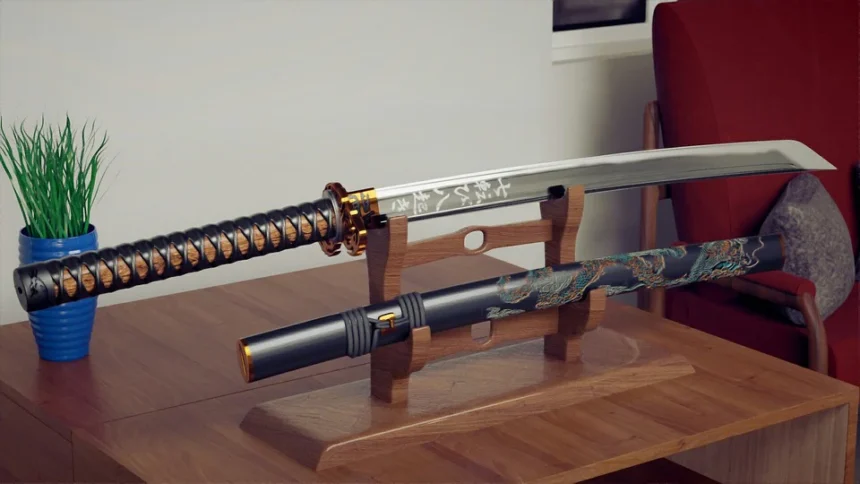The Japanese samurai sword, commonly known as the katana, stands as a symbol that transcends its role as a mere weapon.
Crafted with meticulous precision and steeped in centuries-old tradition, the katana is a manifestation of honor, discipline, and unparalleled craftsmanship.
Historical Evolution of the Katana: An Intricate Journey Through Time
The Japanese samurai sword journey through history is as intricate as the craftsmanship that births it. The sword’s evolution can be traced back to the Heian period (794-1185), where the precursor to the katana, the tachi, was prominent.
The tachi, with its edge facing downwards, was worn suspended edge-down, an evolution from earlier straight blades.
During the Kamakura period (1185-1333), a shift in battlefield tactics led to the emergence of the katana in its current form.
The samurai’s preference for quick, decisive strikes influenced the katana’s design, with its distinctive curvature providing enhanced cutting ability.
This evolution marked the katana as a reflection of not only the warrior’s skill but also the ever-changing nature of warfare.
The Golden Age of Swordsmithing: Flourishing Craftsmanship in the Muromachi Period
The Muromachi period (1336-1573) saw further refinements in katana design, with improvements in metallurgy and the emergence of renowned swordsmithing schools.
The famous swordsmith Masamune, along with his contemporary Muramasa, became legendary figures, and their swords are revered to this day.
The katana’s significance extended beyond the battlefield, becoming a symbol of social status and prestige.
Edo Period Renaissance: The Katana as an Art Form and Symbol of Prestige
The Edo period (1603-1868) brought about an era of peace, allowing the katana to evolve into an art form.
Elaborate mountings, exquisite fittings, and intricate hamon patterns reflected not only the sword’s functionality but also the aesthetic sensibilities of the samurai class.
Despite the decline of battlefield use, the katana retained its cultural and symbolic importance.
Adaptation in the Meiji Era: Navigating Modernization and Preservation
The Meiji Restoration in the late 19th century brought about significant changes in Japan, including the prohibition of carrying swords in public.
This marked a decline in the katana’s practical use, but its cultural significance endured.
In the face of modernization, the katana for sale became a symbol of Japan’s traditional values and martial spirit.
Contemporary Resonance: The Katana in the Hands of Collectors and Enthusiasts
Today, the katana’s legacy lives on not only in museums and private collections but also in the hands of martial artists and enthusiasts. The appreciation for authentic craftsmanship has led to a global market for katana, with collectors seeking blades from renowned swordsmiths and traditional schools.
In the next articles, we will explore the artistry behind katana crafting, the symbolism embedded in these magnificent blades, and guide enthusiasts on navigating the world of katana for sale.
Join us on this journey through the history and craftsmanship of the Japanese samurai sword, where each blade tells a story of honor, resilience, and the enduring spirit of the samurai.







